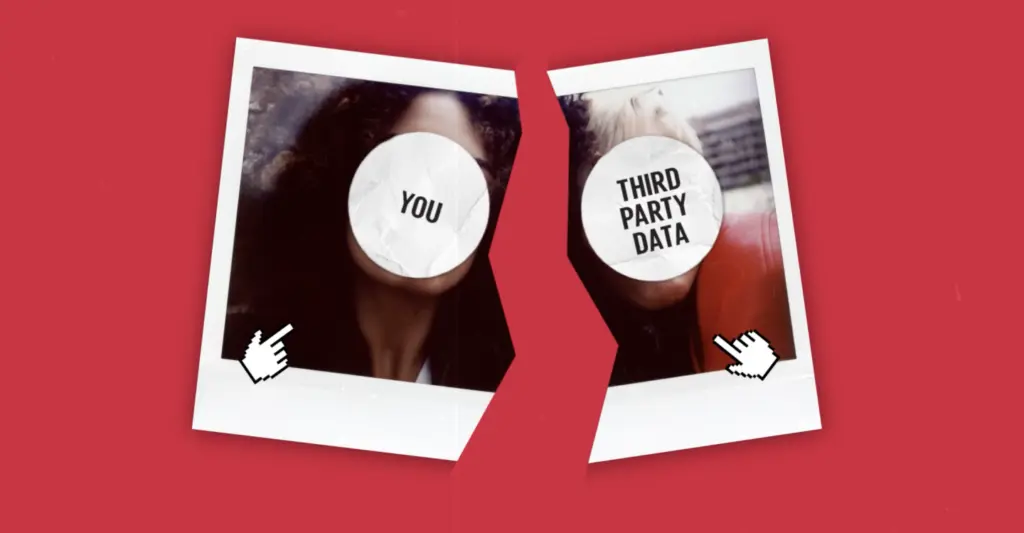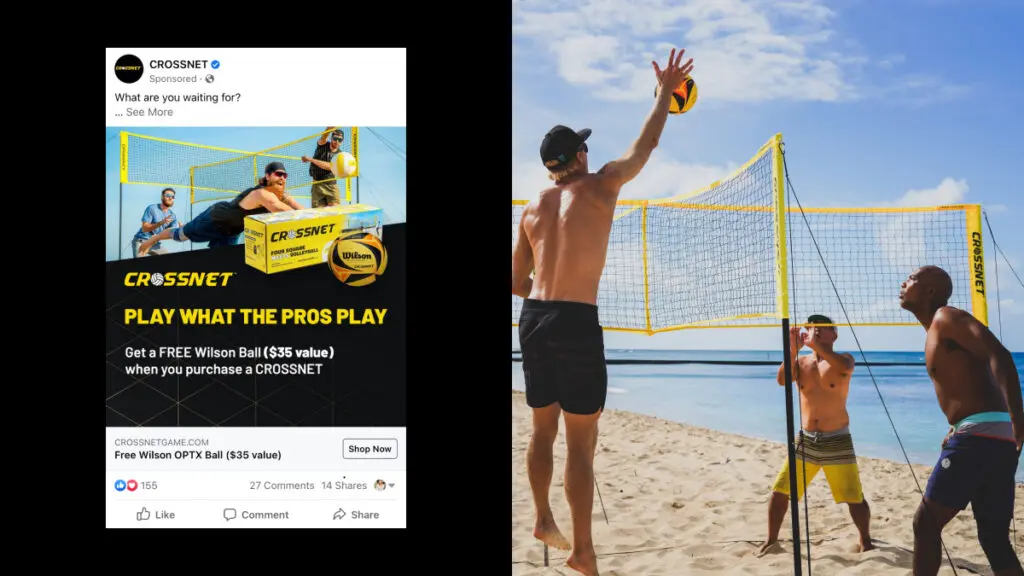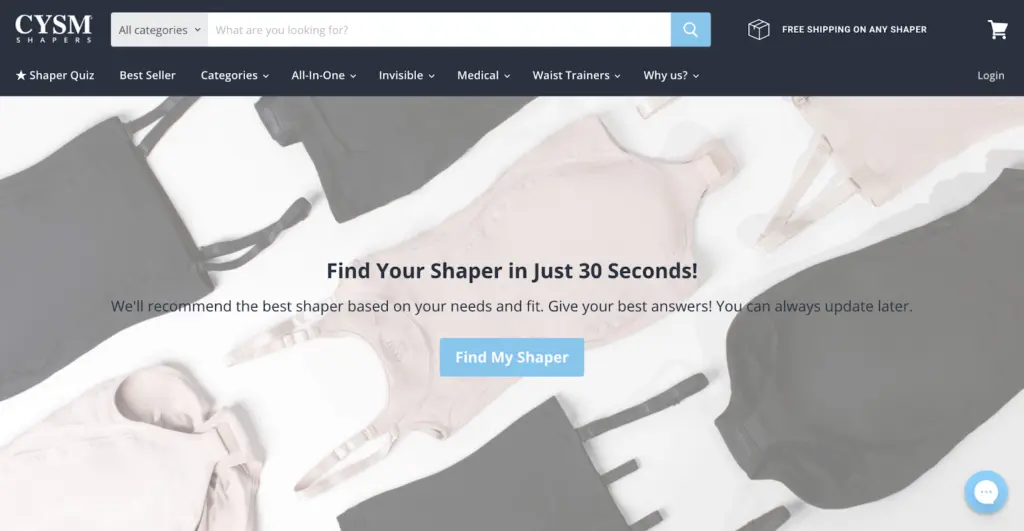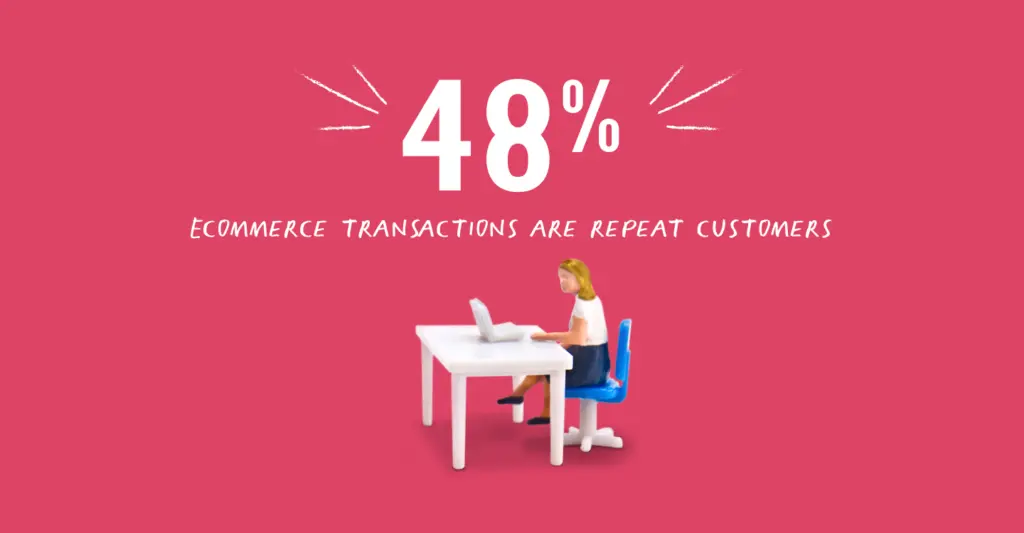A marketer’s full funnel guide to navigate data privacy changes

Less stalking, more talking
Change—it’s the only constant in life. And modern marketing.
While announcements like Apple’s iOS 14.5 update and Google’s phasing out of third-party cookies aren’t shocking, they’re far from a pleasant surprise—much less a welcome one for ecommerce marketers.
Whether you’re already pivoting your plans or you’re bracing for impact, one thing’s clear—it’s time for marketing as usual to change.
Wondering where to start?
Klaviyo’s agency partners have been thinking about what these data privacy changes mean for merchants—and not just thinking, but also helping them shift their strategies to market more effectively in a privacy-first world.
If you’re feeling stuck or unprepared for what’s to come, then let this resource be your North Star. It’s chock full of advice from ecommerce masterminds from the likes of Brand Caffeine, Classy Llama, Common Thread Collective, MuteSix, PAASE, Slicedbread, Structured, Tinuiti, and Vaimo. Plus, find insights from marketers at brands including CROSSNET and Nomad, and technology vendors including Flowbox, Friendbuy, Loop, LoyaltyLion, Octane AI, and REVIEWS.io.
Use the Klaviyo data analytics tool and dashboard to apply predictive learning to your marketing.
Read on to find tips on how to directly address the ramifications of Apple and Google’s data privacy changes. Plus, learn how to “flip the funnel” and build a brand that can outlast any data privacy changes to come. But first, let’s start with the basics—what you need to know about these data privacy changes and what they mean for you.
Keep reading to learn:
- What you need to know about the data privacy changes
- Tips for acquisition and retention
- Tips for conversion and optimization
- Tips for retention and loyalty
- What flipping the funnel means
Jump to a section:
- The lowdown: What you need to know
- 6 tips for acquisition and attribution
- 4 tips for conversion and optimization
- 3 tips for retention and loyalty
- Flipping the funnel
- The way forward

The lowdown: What you need to know

The way you’ll be able to report on email data and how you use third-party data—or the information you collect on users through an indirect relationship—is fundamentally changing. And it all comes down to the cookie.
While these tiny pixels started as a way for advertisers to track consumers and provide more personalized content, cookies can now seem creepy as consumers become increasingly concerned about how much of their private information is publicly available.
Big tech realized consumers were growing wary and recognized more regulations were likely on the horizon after government interferences such as GDPR and CCPA, so they’ve incorporated more privacy features into their platforms.
Apple’s response to consumer privacy concerns
Previously, Apple could track and share your data across other apps and websites through something called an Identifier for Advertisers (IDFA), or a unique identifier Apple generates and assigns to every device. This IDFA tracks users’ online behavior and provides advertisers with data they can use to serve consumers relevant ads based on their browsing history.
But with the iOS 14.5 update, which affects all Apple devices (and over one billion people globally), apps now have to ask to collect and share your data, and consumers can opt out at any time.
Of course, if only a small percentage of the population was opting out of tracking, this wouldn’t be such a big deal. But only 15 percent of worldwide users and six percent of US users have chosen to opt into tracking on iOS 14.5.
Google’s response to consumer privacy concerns
Google plans to phase out third-party cookies (3PC) in 2023. Cookies are the tracking codes that exist on various websites and follow users around the internet. They let advertisers track people’s movements online in order to target them with relevant ads.
In lieu of 3PC, Google will test Federated Learning of Cohorts (FLoC), which tracks groups of people based on their common interests, as opposed to tracking individuals based on their online behaviors.
While FLoCs may ease the burden of cookies disappearing altogether, they certainly don’t replace 3PC, and marketers will need to better understand how to effectively target these groups of users as opposed to targeting individual users.
How these data privacy changes will affect ecommerce businesses
Long story short, advertising on third-party platforms is going to be more challenging and less efficient since marketers’ will lose their ability to deliver highly personalized and targeted messages to consumers.
Not to mention, paid advertising is getting pricey—cost per impressions (CPM) and cost per click (CPC) are increasing, which is effectively inflating customer acquisition costs (CACs) on third-party platforms.
Meanwhile, there may be a lower return on ad spend (ROAS) because the attribution windows on advertising platforms may be shorter, causing lower activity attribution.
What is Customer-First Data™ and why should you care?
As it becomes more difficult to collect, target, and measure with third-party data, savvy marketers are shifting their focus to first-party data and zero-party data.
Zero-party data accounts for the information that people voluntarily offer to brands, like their email address or phone number, and first-party data accounts information observed by a brand about someone on their owned properties.
“Zero- and first-party data are extremely important because you’re asking for this data and collecting it in a consensual way, and that goes really far with consumers. Using more of this data will also allow us to provide more relevant messaging and build stronger relationships with customers. Ultimately, it’s going to allow us to make our marketing dollars work harder. But now it’s going to be done in the right way versus how we’ve been functioning—collecting data for the sake of it, knowing way too much about people, and using people’s information in a way that they aren’t comfortable with.”
Zero- and first-party data are consent-driven, while third-party data is not explicitly opted-in to — or at least hasn’t been until recently. On top of that, all the ambiguity surrounding how advertisers actually collect data has largely made consumers distrust the process altogether.
Keep in mind that Apple and Google aren’t responsible for the repercussions to ecommerce marketers—consumers are. Apple and Google are simply listening to what people are asking for and giving it to them.
For this reason, a more appropriate name for first- and zero-party data is Customer-First Data because it takes into account whether people want to engage with brands through explicit consent.
This idea shouldn’t be revolutionary, but it is. And it requires a mindset shift, but if you’re ready to put your customers first, then keep reading for full-funnel tips to address the data privacy changes, plus a new approach that’ll help you build a brand to withstand future changes.

6 tips for acquisition and attribution

Perhaps the biggest question weighing on marketers’ minds is, “How is this going to change the way we approach customer acquisition and attribution?”
If you’re wondering how to adapt your top-of-the-funnel tactics in response to these data privacy changes, consider the following advice based on conversations with Klaviyo’s agency partners.
They start with the quick wins and low-hanging fruit you can implement immediately, and lead into more long-term strategies for growth.
Acquisition tip 1: Rethink how you measure attribution
Measuring the impact of your marketing dollars on third-party channels will undoubtedly be a challenge moving forward.
In fact, as ROAS becomes significantly harder to track because of the reduced visibility around user activity, many marketers are being forced to revisit the way they think about attribution completely.
“Somebody may have seen a Facebook ad 10 days ago and made a purchase, but Facebook is no longer getting credit for that sale. They used to have that 28-day conversion window and now it’s seven days. Marketers have to look at the big picture, which is measuring top-line sales versus total media spend.”
One emerging attribution method that’s proving to be popular is ditching platform-specific metrics in favor of measuring your marketing efficiency ratio (MER).
MER is also sometimes referred to as blended ROAS because it refers to evaluating the return on investment (ROI) of all online advertising compared to other channels. More specifically, MER looks at your total revenue divided by total advertising spend.
But what does this mean for marketers?
It suggests that you’ll have to zoom out of attribution on a channel-by-channel basis (e.g., understanding the ROAS for Facebook advertising) in exchange for measuring the ROI of paid advertising as a whole and determining if it’s effective for your brand.
“We’re exploring budget reallocation from paid advertising to other channels with our clients, but we’re not going to decrease ad spend on paid search and paid social on a whim. We’re taking a step back, and instead of just looking at ROAS attributed in Facebook, we’re looking at MER.”
While MER is going to be a popular way to determine the effectiveness of paid advertising, you have different options to measure attribution. That’s why it’s important to research and identify a model that works for your business.
“Consider attribution models that span different verticals, such as media mix modeling (MMM). MMM allows you to figure out the value of the different media channels that you’re running, including owned media, to see what’s driving the strongest ROI, so you can reevaluate how you invest your money. Multi-touch attribution is based on being able to see the full funnel of what users are doing, but we’re not going to have that full visibility anymore.”
Acquisition tip 2: Consider your product promotion strategy in your ads
The inability to get hyper-targeted on third-party platforms will also influence which product promotion strategies are most effective in your advertisements.
For example, since it’ll be more difficult to personalize ad content to individual users, merchants with a limited number of SKUs may focus on conveying the brand story or promote full collections instead of specific products. Meanwhile, merchants with many SKUs may focus on promoting best sellers.
“We’re going to have to take less of a granular approach to advertising now. Rather than advertising an iPhone case, for example, my ads will promote the full catalog. We’re creating more brand-centric messaging that compels people to visit the store and gets people to the site, rather than trying to do micro-targeting through third parties.”
Additionally, as CPMs and CACs increase, marketers will need to be mindful of the profit margin on each ad sale.
Consider not just what shoppers will be interested in, but also what will be profitable for your business. For some marketers, this means aiming for a higher average order value (AOV) by focusing your paid promotions around product bundles and high-ticket items.
“If you have a lower AOV and CPMs are rising on Facebook, you have less of a margin. And if your acquisition costs are increasing to match the price of your product, you may break even but not make enough to keep the lights on. It used to be more challenging to market a higher-priced product, but brands with a higher AOV are actually seeing better returns because each conversion results in more profit.”

Acquisition tip 3: Leverage lookalike audiences
As third-party data becomes less available, marketers can use the Customer-First Data they already own, such as email addresses and phone numbers, to reach new audiences through lookalike audiences.
“We have to shift to targeting interest-based audiences rather than relying on third-party data. But when we get Customer-First Data and we can connect it into Facebook, we know the audience is going to be a winner for us. This is because the algorithm effectively identifies new customers through the lookalike audiences based on our email list.”
The MuteSix team typically creates multiple lookalike audiences for their clients, expanding beyond just paying customers to also include people who have added an item to their cart, people who have visited the brand’s website, and other subscriber segments.
While there are endless data points you can use to segment, consider defining what types of behavior indicates a high-value customer for your brand, and use that to fuel your lookalike audiences.
“I look at on-site behavior to understand what parts of a clients’ website or app are most appealing to their audience, understand what behavior makes them a high value user, and then use that to find similar people. This methodology is based on customer behavior and it’s based on what people opted in to give you, so it’s going to be one of the stronger strategies that comes out of these changes.”
Acquisition tip 4: Use lead ads to collect email addresses
What are your goals with paid advertising? If they mainly revolve around quick conversions, it may be time to examine a more scalable strategy.
For example, rather than relying on paid ads for one-off sales, you can use them as an opportunity to gather Customer-First Data by building your email and SMS lists through lead ads.
“You don’t need to wait until shoppers are on your owned channels to collect Customer-First Data. You can also use social forms, such as Facebook lead ads, where someone can submit their email to get a discount, receive more information on the brand, or enter a giveaway.”
Additionally, this strategy can bring new shoppers through the funnel and ultimately pay off better than trying to get them to buy on the first interaction with your brand.
“Capturing Customer-First Data at the top of the funnel is far more effective than trying to speak to a broad audience and telling them to come and buy a product from a brand they’re not familiar with. The first step you should take in marketing to a cold audience is to spark their interest and capture their email address so you can more accurately remarket to that individual.”
Acquisition tip 5: Place a greater emphasis around ad creative
Ads will have to appeal to a broader audience, so you may need to change your approach to your creative elements, such as copy, content, promotions, media, and messaging.
“The emphasis around ad creative is transforming alongside these privacy changes. Creative was always important, but it wasn’t everything because you could create those personalized, targeted experiences for shoppers. Moving forward, creative is going to account for the majority of the equation as to whether an ad is effective or not.”
Chase added that one strategy he finds consistently effective is what he explains as promoting content he collects at the bottom-of-the-funnel to top-of-the-funnel prospects.
“This means showcasing user-generated content (UGC) and videos, while testing to ensure we’re serving ads that are effective with audiences of all types. Overall this is going to put more and more emphasis on owning the customer journey off advertising channels, including email and SMS.”
Consumers who are hearing of your brand for the first time will be hesitant to buy—whether at the first glimpse of an ad or the tenth time seeing it— without social proof. This is where the testimonials, reviews, and other UGC come into play.
“Focusing on social proof is essential in today’s competitive landscape. UGC is an often under-used resource that lets brands increase top-of-funnel traffic, onsite engagement, and product discoverability. By activating their community, brands have access to regular, fresh content that performs better than staged product images.”
Cecilia Rehn, digital marketing manager, Flowbox
Across the board, marketers are placing their bets on content that builds trust among new shoppers.
“The main benefit of collecting reviews is to build trust with customers, boosting conversion. Displaying ratings and review stars next to ads is proven to increase click through rate, and harnessing the persuasive power of happy customers instills confidence that your product does everything you say it does.”
Acquisition tip 6: Consider reallocating your time and budget
While marketers used to depend on digital advertising for its ability to easily track performance, a less reliable attribution model means many are taking this time as an opportunity to experiment on other channels.
“Now that Facebook’s in-platform reporting data is getting more murky, it gives me more freedom to test top-of-funnel channels we’ve never had good reporting with in the past […] All of these are channels we can’t track or attribute sales to, but we can’t do that with Facebook anymore, either, so I’ve taken the approach of testing everything.” Chuck, marketing director, Nomad
In conversations about budget reallocation, Klaviyo’s agency partners said these were the most popular strategies to drive traffic for their clients:
- Organic social media (e.g., TikTok, YouTube, Instagram, Pinterest, etc.)
- Influencer marketing
- Over-the-top advertising (OTT)
- Connected television (CTV)
- Out-of-home advertising (OOH)
- Public relations (PR)
- Search engine optimization (SEO) and search engine marketing (SEM)
In fact, they unanimously agree that experimenting with new customer acquisition channels will be key to sustaining growth.
“We’re exploring platforms like TikTok with our clients because of the crazy organic reach and the ability to go viral. We’re also experimenting with Pinterest, and seeing if we can get some pins to gain some visibility, as well as increasing our efforts on YouTube and creating more video content. A couple of our clients have started doing CTV, so we’re analyzing whether there’s a way to enable brands to scale on that channel.”
In addition to considering organic marketing channels, some marketers are re-allocating their ad spend to different paid social platforms.
“Ecommerce marketers are starting to push into some of the smaller platforms, and I’ve seen a lot of folks trying to advertise on Pinterest, Snapchat, or TikTok. People have become smarter about CPMs across all platforms as they’ve seen them increase on both Facebook and Google.”
The overarching message among marketers? Now is an ideal time to experiment with channels you may not have otherwise considered.
“Explore different ways to diversify your media. Start testing new channels while you still have visibility. I’m a huge advocate for the OTT and CTV space because they’re not as subject to the privacy changes that are happening. They’re not cookie-based, they’re not dependent on IDFA, they’re dependent on household IP addresses.”

4 tips for conversion and optimization

Once you get a new shopper to your website, how do you turn them into a paying customer?
Although this is an age-old question for ecommerce marketers, conversion and optimization techniques are becoming increasingly important since third-party data will result in less qualified traffic.
When you’re moving new shoppers through your funnel and driving them to conversion, consider the following tips.
Conversion tip 1: Capture Customer-First Data
It’s more important than ever to collect, own, and leverage Customer-First Data in order to communicate directly with shoppers in a way that’s relevant to them. But first you need an effective strategy to capture this data.
For many marketers, signup forms are the best way to collect Customer-First Data from shoppers. Signup forms include:
- Popups
- Flyouts
- Embedded forms
But you can’t just plop a signup form on your website and call it a day. It’s also important to create a positive user experience and test collection methods to ensure new shoppers are more likely to subscribe.
“The way we control the narrative of email collection is very important. What’s the popup experience like? Is it coming up right away? Is it five or 10 seconds into being on the website? Does the timing depend on the amount someone scrolls? Then if the user exits out, how can we still get their email address? Make sure you have email capture in your footer or somewhere else on your website where people can still access it.”
Additionally, think outside the popup box to consider how you can collect richer, more useful information. One way to do this is to use UTM parameters in order to get a better sense of where shoppers are coming from.
“We’re trying to do more with our clients’ popups using UTM tracking to understand where people are coming from and what insights we can gain implicitly. If you’re collecting UTM information at sign up, you can get so much information about what ad somebody saw or what audience they were a part of. This will help you understand the source that someone came from and what messaging, creative, or product was featured that was compelling to them and led them to come to the site and sign up.”
By collecting Customer-First Data that a shopper consents to and then targeting them after in a way that’s relevant, you create a more holistic user experience.
“There’s a lot of clever ways to collect more data without it feeling like you’re having to ask for everything or without it feeling creepy. If I click on an ad that promotes a moisturizer, for example, then go to the brand’s website and subscribe to their email list, and the first email they send me has the moisturizer, I think, ‘That’s awesome. I’m glad that they served me that.’”
The name of the game with signup forms is data collection, which means the more information you can use to fuel personalized customer experiences, the better.
“There’s a lot more that we can do just by taking the data that we already have and tying all of those silos together. There’s so much happening on other channels that we’re not necessarily collecting or connecting back into the email service provider (ESP) for segmentation, so with UTM collection, there’s a huge opportunity to better leverage that piece.”
Conversion tip 2: Create robust customer profiles
Email addresses and phone numbers aren’t the only types of Customer-First Data you can collect. You can use signup forms to collect additional information about your customers to use in future marketing automations—and all you have to do is ask.
“Our clients are starting to ask subscribers for birthday information in checkout. Once they have this information, they can begin building out robust customer profiles and trigger relevant messages on certain key dates.”
But dates are just one example of the kind of information you can collect. The options are endless—you could use signup form fields to ask subscribers about their:
- Intent (e.g., are they shopping for mens’ vs. womens’ clothing?)
- Preferences (e.g., do they like cats vs. dogs?)
- Interests (e.g., what’s their favorite coffee roast?)
Consider what you can ask your subscribers up front to effectively build out their customer profiles. Then analyze their behaviors and actions, such as browsing activity, to create more personalized experiences.
“How do we build out a profile to say we know that a customer is a small breed dog owner? Then how do we recognize the customer and recommend a product? We don’t typically get that data unless someone has already made a purchase, so we need to start building out customer data profiles that aren’t completely based on transactions. Moving forward, that’s the only way we can build a timely, relevant, and automated customer story.”
Customer first-data collection goes beyond signup forms, as well. For example, implementing an onsite quiz is an extremely effective way to collect both email addresses and phone numbers while also gathering more information on the shopper.
“Quizzes help people find the right product, so they’re a value add to the shopper, but it’s also giving you information about the problem you’re trying to solve—what are they interested in and what’s the price point that they would consider? If you’re asking questions like that, it gives you so much information to create a great experience at the beginning of the customer journey, and it also enables you to own data that you can segment on the backend.”
As you contemplate the best way to move forward with your marketing efforts using Customer-First Data, consider how you can consensually collect more information from your shoppers in order to start building out more robust customer profiles—and stronger relationships.
“We’re focusing on more soft data capture, which means we’re asking questions, trying to build a better relationship from day one, rather than just looking at each subscriber as a number and blasting an email out. There’s a big opportunity here to play the data back to the customer with things like personalized recommendations rather than offering a discount to purchase. We’re capturing more customer information through Octane quizzes or Recharge subscriptions and bringing the data back into Klaviyo to better personalize our messaging to each person.”
If you’re looking to expand your Customer-First Data collection, take a look at your current technology stack for opportunities to gather more information from shoppers on your owned channels and connect it back to your marketing automation platform.
“Quizzes and conversational popups are the most direct way to collect Customer-First Data. Shoppers explicitly share their preferences, concerns, or even skin type in order to get personalized product recommendations. Merchants can then use this data to increase conversion by personalizing the whole shopping experience, including product recommendations, Facebook Messenger interactions, email and SMS automations on Klaviyo, and segmented Facebook retargeting and lookalike audiences.”

Conversion tip 3: Optimize owned assets
As marketers grapple with the challenge of seeing more unqualified traffic come through the funnel, conversion rate optimization (CRO) is going to be top-of-mind as customer experience takes first priority.
“How are you bringing people to this site? What experiences are they having when they land? How are you treating them and shepherding them while they’re there? Consider whether touch points like browse, search, and checkout are optimized to construct an exceptional customer experience.”
Brian Derth, head of strategy and growth, Vaimo
To convert more shoppers, use your historic data and double down on what’s working in terms of the products, landing pages, and other owned assets that shoppers engage with most and that are performing well.
“People often have ideas about what should work versus looking at the data and identifying best-selling products, best-selling categories, or high-traffic pages, and optimizing those. If half of your traffic is landing on a category page, how do you optimize that to get even more conversions? If people are consistently looking for a particular product, how do you promote it more? Those are the areas to invest in. Lean into what’s working first, and you’ll see your conversion rate go up.”
Additionally, the destination to which you bring consumers through your ads is often equally, if not more, important than the ads themselves.
“Make sure that the pertinent information is above the fold to capture your audience immediately, rather than forcing them to seek answers elsewhere on your website. Ensure shoppers are getting all the information they need on your product and landing pages before they have to start exploring other areas so you don’t risk a high bounce rate.”
But improving the usability of your web pages and thinking critically about the full customer journey isn’t just a CRO tactic—it can also help with segmentation.
“We’re creating a lot more landing pages for clients now. This helps to separate incoming Customer-First Data into separate silos because, otherwise, there’s so much overlap and so much loss in the ability to segment. We recommend that marketers use URL parameters to build segments based on how people come onsite and tailor the way that you guide people through the funnel. You have to try to keep everything in its own silo, which allows us to create tighter audiences.”
Conversion tip 4: Use retargeting and remarketing to get new customers over the finish line
Even with the best CRO strategy, not every shopper will make a purchase on their first visit to your website. But after someone subscribes, you can use their email address and phone number to effectively bring them through the funnel.
Setting up email and SMS automations is an exceptional place to start—plus, it’s relatively low cost for a solution that will make you money in your sleep. Some of the baseline marketing automations to increase conversion with new customers that Klaviyo’s agency partners recommend include:
- A welcome series
- An abandoned cart automation
- A browse abandonment automation

But while these automations are simple to set up, a set-it-and-forget-it attitude will be limiting, which is why ensuring you effectively segment these automations can make all the difference in your ability to convert customers through email and SMS.
“I highly recommend doing more segmentation with cart abandonment based on cart value. If brands have a free shipping threshold, they should segment based on the value of the cart. If a customer already qualifies for free shipping, include that in the messaging. If they haven’t, consider taking a different promotional approach.”
Personalization shouldn’t start and stop with your abandoned cart automations, though—it should inform the strategy around every communication you have with your customers.
“There’s so much that can be done with messaging that’s specific to the person’s preference or the product that they’re considering, and there’s a lot of missed opportunities in terms of thinking through where additional messaging is warranted or where a different approach is necessary in order to nurture people.”
Additionally, while iOS 14.5 will affect the extent of which marketers can use Facebook to retarget shoppers (since you’re losing the data around website or app activity that you might typically use to source Custom Audiences), using your email list as a source should work similarly to how it has in the past.
If you ever doubted the power of an email list, remember that you can use them for personalized retargeting in addition to remarketing through owned channels.
“We have the Facebook integration setup within our clients’ Klaviyo accounts so we can pass through various list and segment data in real time. We’re using this data that we own to increase personalization and engagement at each step in the funnel.”

3 tips for retention and loyalty

Experienced marketers know their job isn’t finished once a shopper makes a purchase. In fact, it’s often the post-purchase experience that’s the biggest contributor to (or detractor from) a brand’s success.
Consider the fact that 48 percent of all ecommerce transactions are from repeat customers, so your current customer base may be your greatest as you deal with these changes to data privacy.
Retention tip 1: Don’t skimp on loyalty and referral programs
Every brand has a few raving fans who come back to purchase again and again (even if it’s just your mom and your best friend), which is why loyalty programs are invaluable tools for increasing customer retention and word-of-mouth.
“One of the most effective ways we increase customer retention for our clients is through loyalty programs, which entice customers to keep coming back and purchasing. Plus, word-of-mouth is always going to be the best form of advertising, so if you’re incentivizing your customers to tell people about your brand, that’s a good way to get even more value out of your loyalty program.”
With the right incentives, you can make your customers feel like one in a million, which can influence both repeat purchases and referrals.
“Use your loyalty program to reward existing customers with perks and VIP experiences that motivate them to shop with you again without having to rely on paid advertising. You can also reward customers for referring others to your brand, which helps you acquire new shoppers more cost-effectively than paid ads. This is because referred customers trust you and convert quicker. They’re also up to 24 percent more loyal.”
Encouraging word-of-mouth can also influence new customer acquisition in a way that’s much more affordable than paid advertising—and the CACs don’t increase.
“Every customer you acquire through referral is one less you have to acquire through paid, so it’s incredibly cost-efficient. Referrals should be one of your most efficient channels in terms of low cost per actions (CPAs) and high lifetime value (LTV). A referral program CPA is typically in the single digits compared to CPAs of paid channels which are between $25 to $50, or even higher. Plus, referred customers convert five times faster and they typically have a LTV that’s three times higher.”
Retention tip 2: Curate an exceptional post-purchase experience
Customer retention isn’t always about creating exceptional VIP experiences—sometimes it’s simply about making sure your checks and balances are in order.
Many marketers don’t invest their time in the post-purchase experience, but this can be the difference between a customer returning or choosing another brand the next time they shop.
“There’s a lot marketers can do post-purchase to help people understand how to get the most out of the product. We’re focused on what the post-purchase journey looks like in email and SMS, and trying to add value to the customer’s life outside of the transaction by providing relevant content.”
For example, one of Common Thread Collective’s clients is a non-alcoholic spirit company. In the brand’s post-purchase automation, they email customers different recipes they can try using the spirit, as well as a shopping list that they automatically receive via text so they can buy the cocktail ingredients.
“We use the post-purchase experience as an opportunity to ensure maximum enjoyment from the product, create a stronger relationship with customers, provide more value outside of the transaction, and execute a strategy around winback offers. This requires executing tests with Klaviyo’s predicted next purchase date automations and understanding the optimal time to win someone back. There’s a lot of thought that goes into the overall post-purchase experience to make sure that it’s delightful and we’re earning a repeat purchase.”
Part of the post-purchase experience is also thinking about returns. Returns can cost you money and negatively impact the perceived value of your products, but there are small ways you can reduce returns (and bad reviews) after a customer makes a purchase.
“Try to get ahead of returns as fast as possible. We frequently have to warn clients against promoting products with a high return rate, so it’s important to be thoughtful about digging into your returns data to understand what products people are returning and why. Consider whether there’s a way to set expectations through care instructions or by being more transparent about the product.”
Creating a seamless returns experience is going to be critical as you adjust to data privacy changes and focus more of your marketing efforts around customer retention.
“Knowing that 67 percent of customers check the returns policy before they purchase is the first step to understanding how important an excellent returns process is in keeping customers that have already made a purchase.”
The best part? You can use your Customer-First Data to enable a better returns experience.
“Marketers can easily use the returns data (like return type, returns reasons, and more) to better inform personalized automations in Klaviyo, continuing to customize the shopper experience.”
Retention tip 3: Focus on LTV and RPR
Customer retention is a long game, and it’s more important than ever that you make the play.
Marketers often focus on the performance of customer acquisition efforts rather than considering the impact of customer retention. But prioritizing LTV and repeat purchase rate (RPR) is going to be critical as the data privacy changes confirm the importance of leveraging your current customer base.
“Brands spend a lot of time on paid acquisition. Often, they focus on ROAS and revenue only, instead of LTV and RPR. But you’re never going to scale effectively beyond a certain point if you’re just constantly churning through customers, so it’s a good thing to force people to understand how the entire funnel works and how important email and SMS are.”
As you react and adapt to the data privacy changes, evaluating the performance of your efforts at every stage in the funnel—and not just the top—is going to be how you make your brand resistant to change.

Flipping the funnel

Now that you’re equipped with tips to span the entire marketing funnel amid the data privacy changes, you may be pondering where exactly to start. Although it may be natural to take a top-down approach, think about your ecommerce presence as if you were building a house.
“You can’t start talking about the color of the curtains before you lay the groundwork. You have to solidify the foundation and decorate the rooms later.”
And if you want to lay a foundation for your brand, you have to flip the funnel.
Start by focusing on conversion and retention. Prioritize collecting Customer-First Data, optimize your owned assets (your emails, SMS messages, and website), and set up your customer infrastructure at the bottom of the funnel in order to create more personalized experiences at scale—without relying on Apple, Facebook, Google, or any other third-party platform.
This is how you create a lasting impression starting from the first touch a shopper makes with your brand, through their first purchase, and beyond. And it’s how you can create a business that’s built to withstand changes to data privacy, both now and into the future.

The way forward
As the digital marketing landscape continues to evolve, we have no choice, as marketers, but to adapt—and that’s not always easy.
But it’s important to keep in mind that these changes will help you maintain a customer-first mindset and ensure you’re creating experiences that people actually want to see and engage with. Ultimately, this also makes your brand one that new shoppers will trust and customers will come back to time and again.
While this transition may require you to shift your thinking and may result in plenty of trial and error, these data privacy changes enable you to put your customers at the forefront of your marketing strategy—which is really what we should be doing.


